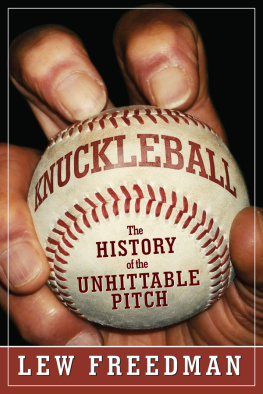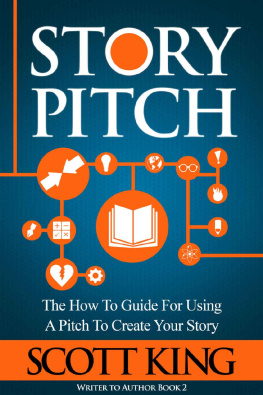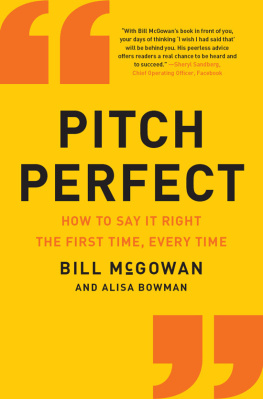A History
of Performing Pitch
The Story of A
Bruce Haynes

SCARECROW PRESS, INC.
Published in the United States of America
by Scarecrow Press, Inc.
A wholly owned subsidiary of
The Rowman & Littlefield Publishing Group, Inc.
4501 Forbes Boulevard, Suite 200, Lanham, Maryland 20706
www.scarecrowpress.com
PO Box 317
Oxford
OX2 9RU, UK
Copyright 2002 by Bruce Haynes
All rights reserved. No part of this publication may be reproduced, stored in a retrieval system, or transmitted in any form or by any means, electronic, mechanical, photocopying, recording, or otherwise, without the prior permission of the publisher.
British Library Cataloguing in Publication Information Available
Library of Congress Cataloging-in-Publication Data
Haynes, Bruce, 1942
A history of performing pitch / Bruce Haynes.
p. cm.
Includes bibliographical references (p. ) and index.
ISBN 0-8108-4185-1 (alk. paper) ISBN 978-0-8108-4185-7
1. Musical pitch. 2. Musical temperament. I. Title.
ML3807 .H39 2002
781.2'32dc21
2002075248
 The paper used in this publication meets the minimum requirements of American National Standard for Information SciencesPermanence of Paper for Printed Library Materials, ANSI/NISO Z39.48-1992.
The paper used in this publication meets the minimum requirements of American National Standard for Information SciencesPermanence of Paper for Printed Library Materials, ANSI/NISO Z39.48-1992.
Manufactured in the United States of America.
For Susie
... Like to the lark at break of day arising...
Contents
List of Illustrations
List of Graphs
32: Profiles: J. Denner, Oberlender, Heitz,
Eichentopf
33: Profiles: Quantz, Kirst, Tromlitz,
A. Grenser, H. Grenser
Preface
This is the first attempt to offer a general overview of the pitch levels of European art music in various periods, countries, and musical contexts back as far as the 16th century. It stands on the shoulders of great studies in the past such as those by Ellis and Mendel, that had more modest (or cautious) pretensions.
The idea of writing this book came originally from Bruce Phillips in 1985, and I am pleased that he is still its editor. After an earlier proposal for the book was accepted, Bruce very kindly shared with me some of the encouraging critiques that Howard Mayer Brown had made on it, comments that I still cherish. In the mid-1990s the project mutated into a Ph.D. dissertation, and from there was deconstructed, revised, and reorganized in its present form.
Back in the early 80s when I first started looking into this subject, I was not aware that already a good generation before, Paul Hindemith had formulated a manifesto for such a study. Hindemiths words were prophetic and radical for the time they appeared; speaking of performing Sebastian Bach in 1950, he wrote:
We can be sure that Bach felt quite comfortable with the vocal and instrumental types that were available to him, and if we care about performing his music as he himself imagined it, then we ought to restore the performance conditions of his time. And in that case it is not enough that we use a harpsichord as continuo instrument. We must string our string instruments differently; we must construct our wind instruments with the scalings of the time; and we must even recreate the relationship between Chorton and Kammerton in the tuning of our instruments.
Since 1950, questions about the original levels of performing pitch have become more frequent and more urgent. They are among the recurring themes in the study of the history of musical instruments, and among the most lively. To answer them is important to makers and restorers of what are (a little anachronistically now) still called historical instruments, as well as to historians of the music of the renaissance and baroque periods, and of course to performers, both singers and players.
The early music revival represents the musical manifestation and the audible result of the rise of music history as a separate discipline. Since most of the art-music we play is at least a generation old, there is a close interdependence between history and performance, and the two activities are constantly teaching each other. The subject of pitch is a good example of this interaction, because what distinguishes this book from previous pitch studieseven Mendels, as recently as 1978is todays flourishing early music scene. With the growing understanding of how early instruments work, a new source of empirical information has appeared that was not previously available.
It is worth wondering whether this information is really useful. What, in the end, are we accomplishing by reviving historical pitches? In the early 19th century, the composer J.H. Knecht wrote, Of course, the introduction of a general universal pitch, like so many other useful things, will long remain devoutly to be wished.
It was not to be achieved, in fact, until the end of Knechts century. His concern was already being expressed by Quantz in the middle of the previous one:
The diversity of pitches used for tuning is most detrimental to music in general. In vocal music it produces the inconvenience that singers performing in a place where low tuning is used are hardly able to make use of arias that were written for them in a place where a high pitch was employed, or vice-versa. For this reason it is much to be hoped that a single pitch for tuning may be introduced at all places.
Contained in this comment is the seed of our present dilemma. On the one hand, we wish to perform at original pitches for the very reason Quantz cites: to accommodate human voices by using the pitch at which the music was originally conceived. But in the process of achieving this worthy goal, we are also discarding the great convenience of a universal pitch standard, for which many musicians like Quantz and Knecht so eloquently campaigned.
Thus history itself throws down an uncomfortable challenge to the historically oriented performance movement. If we are interested in original sonorities, if we want our instruments to act and feel as they did when they were first played and our voices to function as they did for the composers who conceived their parts, it seems we have no choice but to renounce the luxury of a single hard-earned pitch standard. As in so many other issues of historical performance, when the outer layer of this onion is peeled away, it becomes evident that there is more beyond A-415, waiting to be revealed.
One of the rewards of exploring early techniques and instruments is discovering new insights into musical performance that are unlooked for and unexpected. There are facets that cannot be imagined until they are actually played and sung. I hope this book will be useful in a practical way to performers and, with luck, possibly serve as an aid in creating a bit of that musical serendipity.
B.H., 26 June 2002
Notes
. Johann Sebastian Bach. Ein verpflichtendes Erbe (private printing, 1950), reprinted in Tibia 4/2000:311.
. Knecht 1803.
Acknowledgements
Like a polyp in a vast coral reef, this book is built upon the labor and competence of a great many people in the past and present. The Bibliography lists nearly 600 published works on which this study rests. But a considerable part of the material needed has not yet been put into print; personal communications of all kinds have contributed significantly to it. They have come from friends, scholars, organologists, museum curators, instrument makers, collectors, dealers, and performers (in various combinations). It is with gratitude that I register their names here:










 The paper used in this publication meets the minimum requirements of American National Standard for Information SciencesPermanence of Paper for Printed Library Materials, ANSI/NISO Z39.48-1992.
The paper used in this publication meets the minimum requirements of American National Standard for Information SciencesPermanence of Paper for Printed Library Materials, ANSI/NISO Z39.48-1992.